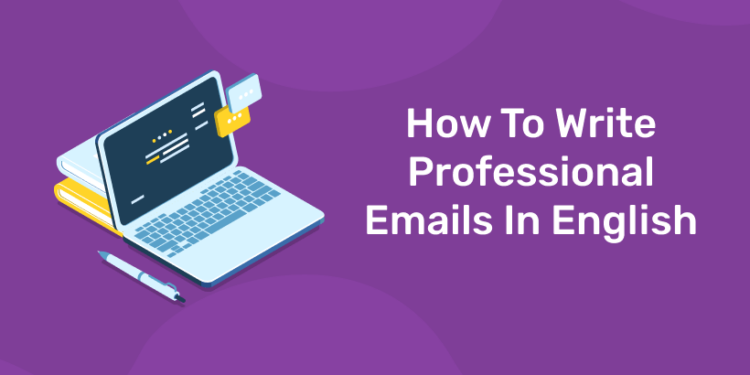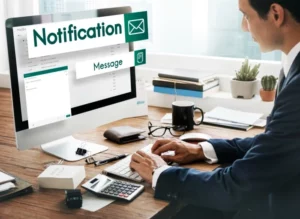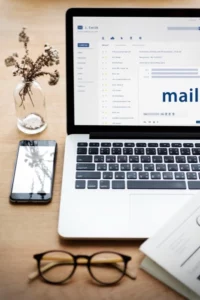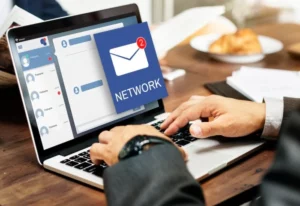Table of Contents
Key Takeaways:
- Start with a clear, relevant subject line to grab attention.
- Personalize greetings and keep introductions brief but informative.
- Be concise and organized in the email body; use lists for clarity.
- Always end with a polite closing and clear call to action.
- Proofread carefully and maintain a respectful tone throughout.
Introduction
Writing professional emails can feel intimidating, especially when you’re starting or trying to impress a new boss or client. You want your message to be clear, respectful, and effective, but the challenge lies in striking a balance between formality and approachability. Every email you send reflects your communication skills and professionalism, which can significantly impact your career success.
In today’s digital-centric workplace, emails are the primary means of communication. Whether you’re requesting information, reporting updates, or pitching ideas, knowing how to write professional emails can simplify your interactions and open doors for new opportunities. This guide will show you practical steps, tips, and examples to help you craft emails that get read and elicit positive responses.
Why Writing Professional Emails Matters
1: Which of the sentences below is grammatically correct?
Professional emails are more than just messages—they’re tools of relationship-building and business growth. Employers highly value clear and polite email communication because it reduces misunderstanding and speeds up decision-making. In fact, strong email etiquette can elevate your professional image, increase your productivity, and help you build trust with colleagues and clients. Clear writing also avoids confusion, saves time, and prevents costly errors.
Spoken English Course for Guaranteed Confidence and Career Growth
Spoken English Course by Entri App: Enhance your communication skills, gain certification, and boost your career with confidence.
Join Now!Essential Format of a Professional Email
Successful professional emails share a common structure designed to present information logically and politely. Follow this universal structure:
- Subject Line: The “headline” of your message
- Greeting: A polite opener addressing the recipient
- Introduction and Purpose: Briefly state who you are (if needed) and why you’re writing
- Body: The main message with supporting details or questions
- Closing: A courteous wrap-up that encourages response
- Signature: Your contact information and professional sign-off
Elevate your speaking skills with our Spoken English Course!
Detailed Step-by-Step Professional Email Format
1. Write a Clear and Compelling Subject Line
The subject line should tell the recipient in a few words what your email is about. This helps your email stand out in busy inboxes and determines if the recipient opens your email immediately or delays it.
Examples of effective subject lines:
- Meeting Request: Budget Review on Nov 5
- Proposal Submission for Digital Marketing Campaign
- Availability for Project Discussion Next Week?
Avoid vague or generic subjects like “Hello” or “Question” as these don’t inform the recipient and can be ignored or marked as spam.
2. Use a Polite and Appropriate Greeting
The greeting sets the tone. Always start by addressing the recipient respectfully, using their name or title if known.
Examples:
- Dear Ms. Patel,
- Hello Mr. Singh,
- Hi Dr. Verma, (more casual but acceptable if you know the recipient)
If you don’t know the recipient’s name, use:
- Dear Hiring Manager,
- To whom it may concern,
Avoid overly casual greetings like “Hey” in formal communication.
3. Write a Clear Introduction and Purpose
If the recipient doesn’t know you, briefly introduce yourself and your purpose for writing in the first 1-2 lines.
Example for introduction:I’m Arjun Sharma, a project coordinator at XYZ Solutions.
Example of stating purpose:I’m writing to follow up on our previous meeting regarding the upcoming product launch.
This immediately informs the reader why you are contacting them, reducing guesswork.
4. Compose a Concise, Well-Organized Body
Focus on one main message in your email to avoid overwhelming the recipient. Use short paragraphs and bullet points or numbered lists for readability.
Example of a well-structured body:
I would like to confirm the details of our next steps:
- Review the attached draft proposal by Friday, Nov 1.
- Provide feedback during our call on Nov 3 at 2 PM.
- Finalize the project milestones by Nov 10.
If you could please confirm your availability for the call, it would be greatly appreciated.
5. End with a Professional Closing and Call to Action
Wrap up your email politely, acknowledging the recipient’s time and indicating any action you expect from them.
Examples:
- Thank you for your attention. I look forward to your response.
- Please let me know if you need any additional information.
- Looking forward to your feedback on the proposal.
6. Use a Proper Signature
Conclude with a formal sign-off and your full contact details, making it easy for the recipient to know who you are and how to reach you.
Typical closings:
- Sincerely,
- Best regards,
- Yours faithfully,
Example signature: Arjun Sharma Project Coordinator XYZ Solutions Phone: +91 98765 43210 Email: arjun.sharma@xyzsolutions.com
Master pronunciation and fluency with our Spoken English classes.
Quick Tips for Writing Effective Professional Emails
- Proofread for grammar and spelling mistakes before hitting send—errors can undermine your professionalism.
- Be polite and respectful throughout your email. Use “please” and “thank you” as appropriate.
- Keep your language simple and clear, avoiding jargon unless you’re sure the recipient understands it.
- Stick to relevant points and avoid filler to respect the recipient’s time.
- Use bullet points or numbers to break up information for easy scanning.
- Respond promptly to emails to maintain good communication flow.
- Adjust your tone depending on your relationship and the formality of the situation.
Spoken English Course for Guaranteed Confidence and Career Growth
Spoken English Course by Entri App: Enhance your communication skills, gain certification, and boost your career with confidence.
Join Now!Common Mistakes to Avoid
- Starting with a casual “Hey” or “Yo” in formal emails.
- Using vague subject lines such as “Quick question” or “Hey.”
- Writing long, dense paragraphs with no breaks.
- Forgetting to clearly state the purpose or next steps.
- Neglecting to proofread before sending.
- Sending emails too late at night or over weekends (except urgent matters).
| Free PDFs for download | |
Examples of Different Types of Professional Emails
Here are detailed examples of common professional email types to guide your writing:
Example 1: Introductory Email
Subject: Introduction – Arjun Sharma, XYZ Solutions
Dear Ms. Kapoor,
I hope this email finds you well. My name is Arjun Sharma, and I am a project coordinator at XYZ Solutions. I recently came across your work on sustainable packaging solutions, which aligns well with a project we are initiating.
I would love to explore possible collaboration opportunities between our teams. Please let me know if you are available for a brief call next week.
Looking forward to hearing from you.
Best regards, Arjun Sharma
Example 2: Meeting Request Email
Subject: Meeting Request – Project Kickoff Discussion
Hello Mr. Mehta,
I hope you are doing well. I am writing to schedule a kickoff meeting for the upcoming marketing campaign project. Could we meet on Thursday, November 7, at 3 PM?
Please confirm if this time works or suggest a different time.
Thank you for your time.
Sincerely, Arjun Sharma
Example 3: Follow-up Email
Subject: Follow-up on Proposal Submission
Dear Dr. Rao,
I wanted to follow up on the proposal I sent last week regarding your upcoming conference. Please let me know if you have any questions or need additional information.
Thank you for considering the proposal. I look forward to your feedback.
Best regards, Arjun Sharma
Example 4: Apology Email
Subject: Apology for Delayed Response
Dear Ms. Singh,
I apologize for the delay in responding to your query. Due to the recent project deadlines, my response took longer than expected.
Thank you for your patience and understanding. I have attached the requested documents for your review.
Please feel free to reach out if you need further assistance.
Sincerely, Arjun Sharma
Entri’s Spoken English Course: Speak with Confidence
To communicate fluently and professionally, Entri’s Spoken English Course offers expert mentorship and practical training designed to improve your speaking skills and boost your confidence at work.
- One-on-one coaching with experienced trainers
- Flexible live sessions and practical exercises
- Real-world speaking tasks to help you apply skills immediately
Level Up with Entri’s Career Level-up Course
For a comprehensive approach to career growth, Entri’s Career Level-up Course combines personality development, interview preparation, and communication techniques to help you shine in every professional interaction.
Conclusion: Take the Next Step in Your Career
Mastering professional emails is a powerful step toward career growth and stronger workplace relationships. By applying these tips and examples, you’ll gain the confidence to communicate clearly and professionally every time. To truly accelerate your progress, consider enrolling in Entri’s Spoken English and Career Level-up courses—they’re designed to make you workplace-ready. Start today and watch your opportunities multiply!
Spoken English Course for Guaranteed Confidence and Career Growth
Spoken English Course by Entri App: Enhance your communication skills, gain certification, and boost your career with confidence.
Join Now!Frequently Asked Questions
How do I write a clear and effective subject line?
Your subject line should be concise and descriptive, ideally under 10 words, to help the recipient quickly understand the purpose of your email. Avoid vague phrases like “Quick question” and instead use specifics like “Meeting Request: Budget Review” or “Proposal Submission Deadline”.
What is the best way to greet someone in a professional email?
Use formal greetings like “Dear Mr./Ms. [Last Name]” if you know the recipient’s details. If you don’t, “Dear Hiring Manager” or “Hello” followed by the person’s first name are acceptable alternatives. Avoid casual greetings like “Hey” in formal contexts.
How long should a professional email be?
Keep your email brief and to the point—usually between 50 to 150 words, focusing on one main subject. Use bullet points or numbered lists to improve readability if you have multiple points to cover.
Should I always introduce myself in the email?
Introduce yourself briefly if the recipient doesn’t already know you. A simple introduction including your name and role is enough, especially in the first email or when reaching out to new contacts.
How do I maintain a professional tone in emails?
Use polite language, avoid slang and jargon, and be respectful throughout. Match your formality to your relationship with the recipient, and always proofread for grammar and spelling errors before sending.
What should I include in the closing of my email?
End with a courteous remark like “Thank you for your time” or “Looking forward to your response.” Sign off with formal closings such as “Sincerely” or “Best regards,” followed by your contact information.
When should I send a follow-up email?
If you haven’t received a response within 2-3 business days and the matter is important or time-sensitive, it’s appropriate to send a polite follow-up asking for an update.
Is it okay to use emojis or informal language in professional emails?
Generally, avoid emojis and overly informal phrases in professional emails, especially with people you don’t know well. Keeping the tone respectful helps maintain professionalism.
How do I handle multiple topics in one email?
Try to focus on one main topic per email. If necessary, divide different subjects into separate paragraphs or use bullet points to keep the content organized and easy to understand.
How important is formatting in a professional email?
Formatting is very important. Use short paragraphs, plenty of white space, proper punctuation, and bullet points or numbered lists to make your email easy to read and less overwhelming.














